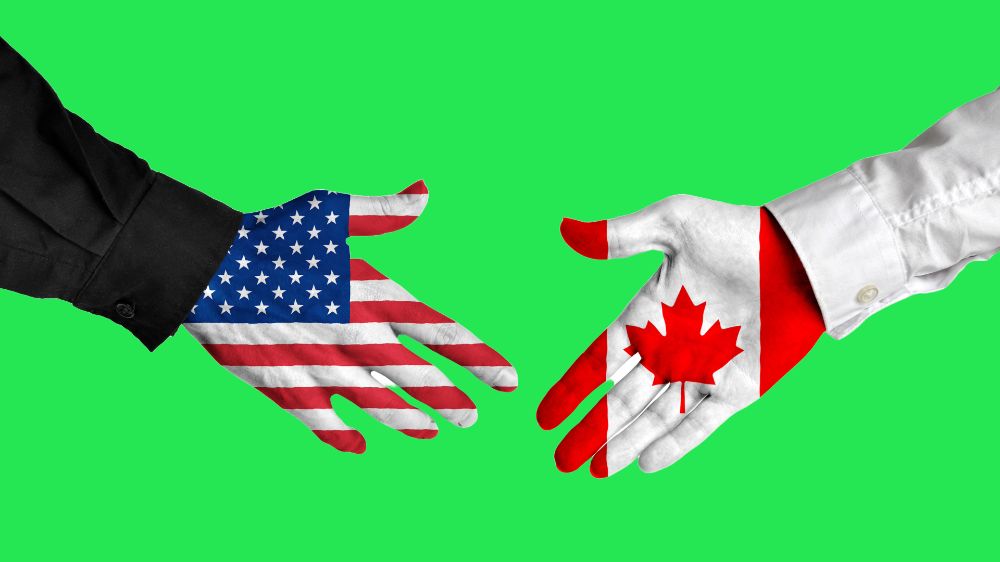The History of Canada and the United States as Trading Partners

The relationship between Canada and the United States has long been one of the strongest and most enduring partnerships in the world. More than just neighbors, these two nations have grown together economically, culturally, and politically, relying on each other in times of need and prosperity. At the heart of this bond is their incredible trade relationship—one that has transformed both countries into economic powerhouses.
Early Days: Trade Across the Border
The seeds of trade between Canada and the United States were planted long before the two countries we know today fully emerged. In the late 1700s and early 1800s, settlers and traders from both sides of the border exchanged goods like furs, timber, and grains. Rivers and lakes like the Great Lakes and the St. Lawrence River served as natural highways for transporting these goods.
As the industrial revolution took hold in the 19th century, the economies of the U.S. and British North America (what would later become Canada) became even more connected. Factories in the U.S. needed raw materials from Canada, while Canadian farmers and loggers found a ready market for their goods in booming American cities.
The relationship wasn’t always smooth, though. In the 1860s, political tensions led to the cancellation of a trade agreement called the Reciprocity Treaty, which had allowed free trade between the U.S. and British North America. However, the economic ties between the two regions remained too strong to ignore.
Confederation and the Growth of Trade
When Canada became a country in 1867, trade with the U.S. became even more important. The Canadian economy was growing, but it was still small compared to its southern neighbor. The U.S., by contrast, was rapidly industrializing and becoming one of the largest economies in the world.
The two countries developed a trade relationship based on their strengths:
- Canada provided natural resources like timber, fish, and minerals.
- The U.S. provided manufactured goods like machinery, tools, and textiles.
Geography made this trade relationship even easier. With a shared border that stretched thousands of miles, transporting goods between the two countries was cheaper and faster than trading with distant nations.
The 20th Century: A Partnership Takes Shape
As the 20th century began, the trade relationship between Canada and the U.S. grew even stronger. Two major world wars—World War I and World War II—pushed the countries to work together economically. Canada supplied the U.S. with vital raw materials for its war industries, and American factories produced goods that Canada needed.
The Great Depression of the 1930s tested this relationship. Both countries imposed tariffs to protect their economies, but the downturn revealed how much they depended on each other. Recognizing this, the two nations signed a trade agreement in 1935 to reduce tariffs and encourage cross-border commerce.
After World War II, Canada and the U.S. became key players in the global economy. Their economies were more intertwined than ever, with industries like automobiles, energy, and agriculture dominating trade.
The NAFTA Era: Deepening the Connection
The most transformative moment in Canada-U.S. trade history came in the late 20th century with the creation of the North American Free Trade Agreement (NAFTA) in 1994. This historic deal eliminated many tariffs and trade barriers between the U.S., Canada, and Mexico.
NAFTA created a tightly integrated economic partnership:
- Factories in Canada and the U.S. began working together to produce goods like cars and machinery. Parts might cross the border multiple times before the final product was assembled.
- Canadian farmers gained better access to American markets, and vice versa.
- Energy trade boomed, with Canada becoming the largest supplier of oil, natural gas, and electricity to the U.S.
The agreement solidified the idea that Canada and the U.S. weren’t just trading partners—they were collaborators in building a shared economy.
2024: Today’s Trade Relationship: Two Economies, One Partnership
Fast forward to today, and the trade relationship between Canada and the U.S. is stronger than ever. The numbers tell the story:
- Canada is the U.S.’s largest trading partner.
- The U.S. is Canada’s largest trading partner.
Every day, goods worth about $2 billion USD cross the border. This includes everything from cars and electronics to fruits, vegetables, oil, and lumber.
The two countries don’t just trade finished products—they work together to create them. For example, a car assembled in Canada might use parts from factories in Michigan or Ohio. This level of economic integration makes their partnership unique in the world.
Why This Partnership Works
The success of Canada-U.S. trade comes down to three key factors:
- Geography:
With the world’s longest undefended border, it’s easy and cost-effective to transport goods between the two countries. - Shared Industries:
Canada and the U.S. specialize in industries that complement each other. For example, Canada provides energy resources, while the U.S. leads in technology and manufacturing. - Trade Agreements:
Agreements like NAFTA and the more recent United States-Mexico-Canada Agreement (USMCA) ensure smooth and fair trade between the two countries.
The Benefits of Trade
The economic partnership benefits both nations in countless ways:
- Jobs: Millions of jobs in both countries depend on cross-border trade.
- Affordable Goods: Consumers in both countries enjoy a wider selection of goods at lower prices.
- Economic Growth: Trade drives innovation and investment, helping both economies grow.
Challenges Along the Way
While the Canada-U.S. trade relationship is strong, it hasn’t been without challenges. Trade disputes occasionally arise over issues like:
- Softwood lumber: The U.S. has accused Canada of subsidizing its lumber industry, leading to tariffs.
- Dairy products: Canada’s strict dairy supply management system has been a point of contention.
Despite these disagreements, the overall partnership has remained strong, even in the face of new challenges, such as climate change, global competition, and the rise of new technologies.
PDF of The 67 American Products to Boycott If Tariffs Against Canada Are Implemented
How to Boycott 67 US Products to Combat Tariffs Against Canada
How To Replace 67 American Products You Use With Canadian Products

